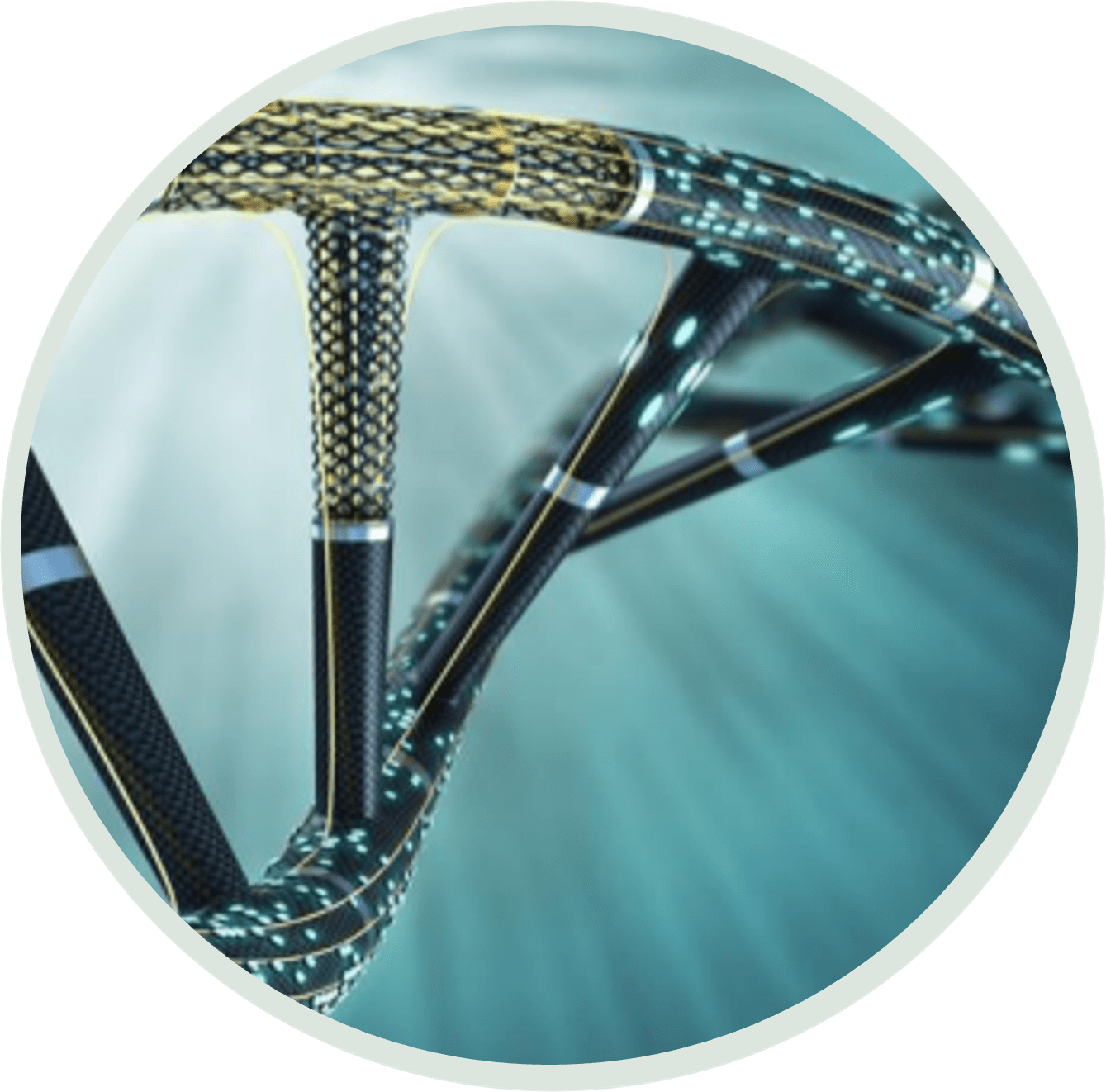Boundary-Breaking Science Symposia: Learning from Life in Extreme Environments

Extreme Biology is an exciting research direction for making totally new discoveries. Green Fluorescent Proteins, Taq Polymerase and even most recently CRISPR have all been discovered from organisms in nature. Commonly studied research organisms like mice, E.coli or tobacco plants are crucial model organisms to test hypotheses, but disrupting discoveries are most likely to be found in organisms that have evolved features under stressful conditions. Studying extreme phenotypes like cancer resistance, longevity, and drought tolerance may lead to biomedical insights that would not otherwise be possible. The scope of this symposium was to peek into the fascinating world of extremophiles and to let nature inspire the scientific community at Bayer in all three divisions: Pharmaceuticals, Crop Science, and Consumer Health.
The Symposium was live-streamed across two sites (Leverkusen-Germany and St Louis-US), and speakers had the chance to present at either site. Mirko Moroni, Pharmaceutical Bayer Fellow, lead the organization of the Symposium with support from Noam Eckshtain Levi (Crop Science) and Olaf Kelber (Consumer Health).
The symposium was opened by Kim Sampson, lead of the Bayer Science Fellows Program, and Peng Zhong, Director of Social Innovation and Science Engagement from the Bayer Foundation.
Scientific Summary – Day 1
Donatella De Pasquale: from the Marine Biotechnology Department of Stazione Zoologica Anton Dohrn, Naples, Italy, “Marine extreme environment as a source of new bioactive molecules.”
Donatella de Pasquale, director of the Ecosustainable Marine Biotechnology Department of Stazione Zoologica Anton Dohrn, Naples, Italy, opened the scientific talks of the symposium virtually. In her talk on “Marine extreme environment as a source of new bioactive molecules,” she presented the tremendously broad research scope of the Stazione Zoologica Anton Dohrn, which was the first marine biology research institute of modern type worldwide and therefore a role model for marine biology research globally. Many of the research programs of the institute are supported by large international research programs, with the aim to leverage marine organisms from extreme environments as a source for new ecosustainable biotechnological approaches, including the discovery of new antimicrobial and immune modulatory molecules from marine microorganisms.
Donatella De Pasquale: Marine extreme environment as a source of new bioactive molecules
Andreas Hensel from the University of Muenster in Germany, “Resurrection plants – Myrothamnus flabellifolia as example for learning from nature towards therapeutically approaches.”
Andreas Hensel, professor and managing director at the Institute of Pharmaceutical Biology and Phytochemistry of the University of Münster, Germany, presented his talk in Leverkusen on “Myrothamnus flabellifolia as an example for learning from nature towards therapeutically approaches”, an unusual use case from his large track record of pharmaceutical biology studies in plants. Phytochemical and pharmacological studies from this plant, a so-called resurrection plant from South Africa, named after its capability to produce, after the rare rainfalls in the desert, flowers within a few days after months of dormancy. Its high content of unusual types of compatible solutes and tannins is the basis of its strong anti-bacterial and anti-viral properties, acting e. g. against periodontitis and so opening up exciting opportunities for therapeutic exploitation.
Andreas Hensel: Myrothamnus flabellifolia as example for learning from nature
Maria Eugenia Farias, from Planta Piloto de Procesos Industriales y Microbiologicos (PROIMI) in Tucaman Agentina, “Extremophiles from Andean salt brines. From ancestral life mechanisms to the development of crop solution biotechnologies.”
Switching to St Louis, Maria Eugenia’s talk on “Extremophiles from Andean salt brines. From ancestral life mechanisms to the development of crop solution biotechnologies”, took us on a journey from ancient earth to the high Andean desert where she discovered ‘living rocks’ or stromatolites ancient forms of life. Traits to thrive in such extreme environments, like arsenic resistance, move across lineages of microbial life with ease. She enabled indigenous peoples to preserve the extreme life while under the pressure lithium extraction. She co-founded Puno Bio so that extreme life benefits biotechnology and agriculture.
Maria Eugenia Farias: Extremophiles from Andean salt brines
Jane Reznick from CECAD Research Center University Hospital in Cologne, Germany, “Metabolic adaptations against ischemic damage in the naked mole-rat heart.”
Jane Reznick introduced us to the fascinating life of naked mole rats. These extremophiles, by living in burrows in Southern Africa, have evolved to resist to complete lack of oxygens for up to 15 minutes. By challenging naked mole-rats with extreme hypoxia, Jane discovered that their heart heavily relies on sugar metabolism, namely glucose and fructose, originating from high glycogen stores in the heart to protect organs from hypoxic injury. Furthermore, she showed naked mole-rat heart has retained some neonatal-like traits in its myocardium which serve further to protect it against hypoxia. Her findings shed light on adapted cardiac physiology under ischemic and hypoxic conditions.
Jane Reznick: Metabolic adaptations against ischemic damage in the naked mole-rat heart
Scientific Summary – Day 2
Dorothea Bartels Professor of Physiology and Biochemistry of Plants from the University of Bonn in Germany presented a talk called “Exploiting genomic information to understand desiccation tolerance in selected plant species.”
Dorothea Bartels opened the second day of our symposium in Leverkusen with her talk “Exploiting genomic information to understand desiccation tolerance in selected plant species” which focused on the understanding of the physiological and genetic adaptations allowing resurrection plants to cope with the challenges of drought and rehydration, and pointed out, that it is a specific, highly targeted regulation of genes, which are also known from other plants, which is the basis of the desiccation tolerance of the resurrection plant Craterostigma plantagineum. So, an understanding of this specific regulation can show ways how to leverage these adaptations also for agriculturally important plants.
Dorothea Bartels: Exploiting genomic information to understand desiccation tolerance in plants
Maximina Yun from the University of Dresden in Germany gave a talk titled “On regrowing structures and remaining young: insights from the salamander.”
Continuing in Leverkusen Maximina Yun gave us insights into the astonishing regeneration capabilities of salamanders, namely axolotls and Spanish ribbed newts. Maximina showed us how salamanders can not only regenerate limbs but also regenerate entire immune glands like the thymus, even after its complete ablation. Regeneration and aging in salamanders are very much linked and Maximina dissected the mechanism of how senescent cells utilize paracrine signaling to trigger regeneration in adjacent cells. This mechanism not only allows salamanders to regenerate limbs and organs but also to live for 10 to 30 years in controlled environments.
Maximina Yun: On regrowing structures and remaining young, insights from the salamander
Nicholas Oberlies, from the University of North Carolina in the US, concluded the symposium with a talk on "The Fungal Battlefield: A Source for New Chemical Diversity?"
The final talk of the symposium moved back to St Louis where Nikolas H. Oberlies, Patricia A. Sullivan Distinguished Professor of Chemistry Department of Chemistry & Biochemistry, University of North Carolina at Greensboro, US, referred in his talk on “The Fungal Battlefield: A Source for New Chemical Diversity?” to the extraordinary capabilities of aquatic fungi to synthetize unusual secondary metabolites, as soon as they are confronted with competing fungal species, based on the amplification of otherwise silent biosynthetic gene clusters. This allows a better understanding of the origin of chemical diversity as a source of bioactive compounds for the use in therapy or plant protection.
Nicholas Oberlies: The Fungal Battlefield. A Source for New Chemical Diversity
The symposium was organized by the Bayer Science Fellows in collaboration with Bayer Foundation. Additional support came through the Bayer Life Sciences Collaboration program, and the Bayer LifeHub Monheim.
The summary is by Mirko Moroni (Pharmaceuticals Division), Olaf Kelber (Consumer Health Division), and Noam Eckshtain Levi (Crop Science Division). Additional Fellows Symposium committee members included: Todd Ciche, Graziana Taramino, and Brent Browder.



